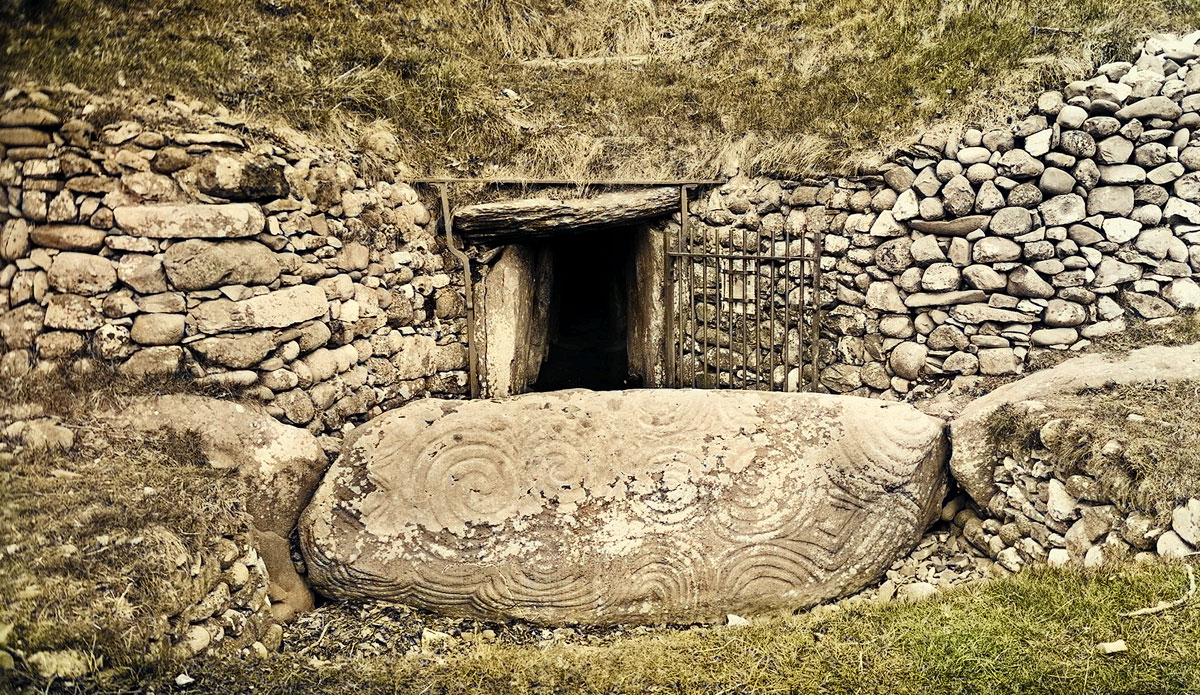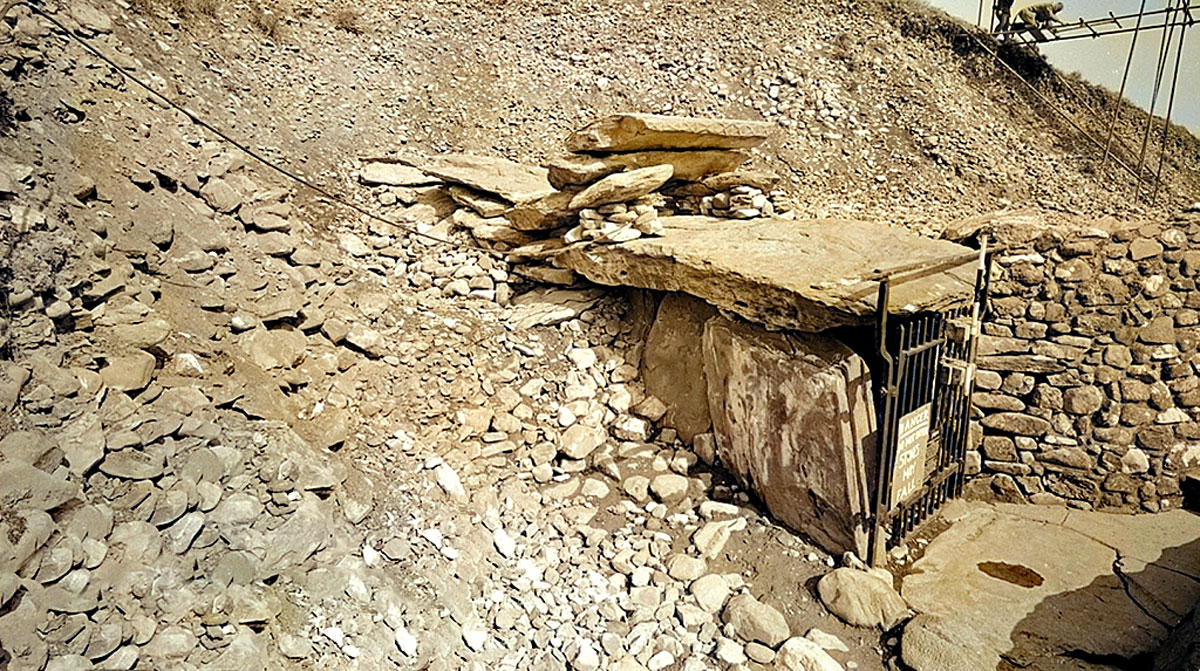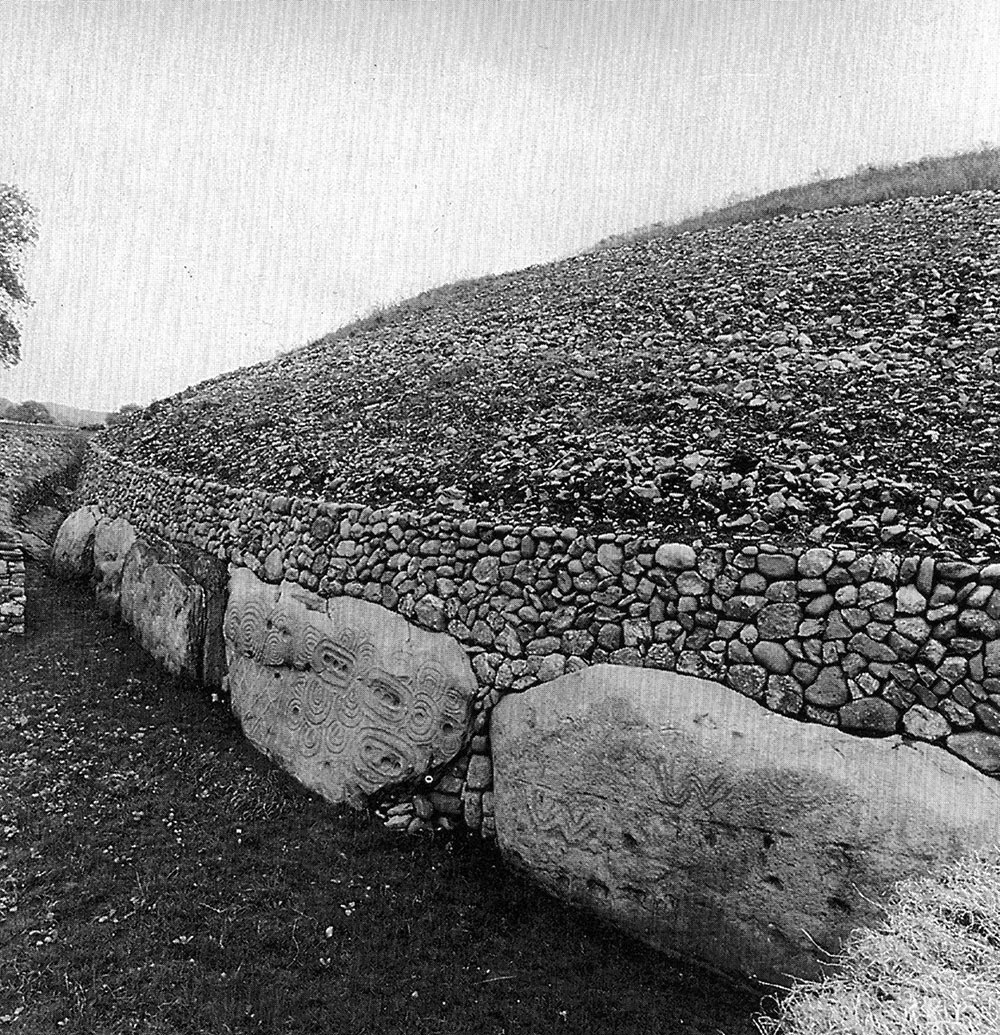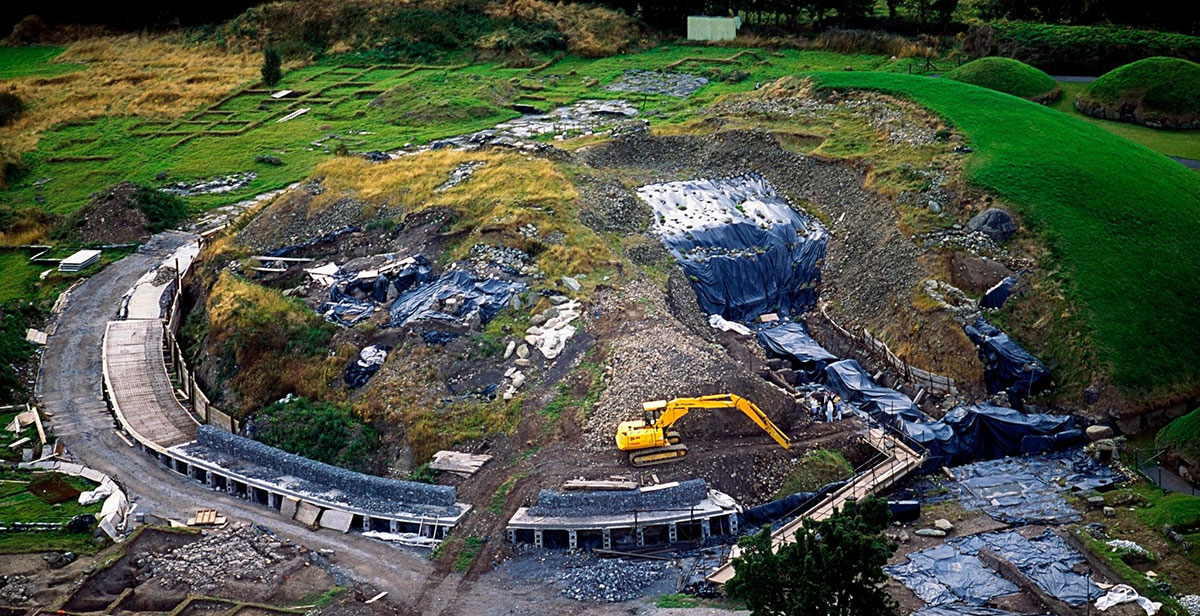THE TEMPLE OF NEW GRANGE
An account of Newgrange from the Freeman's Journal in 1844, possibly reprinted from an article by Thomas Davis in the Nation.
An article relating to these ancient remains which appeared in the Nation of last Saturday, has deservedly excited great interest, and caused no small alarm to all who are anxious for the preservation of our national monuments. Every man of science must feel a deep interest in perpetuating the memorials of an ancient people, whose history is still unentered on the great record of European annals; but those who hope to see Ireland a nation again should feel a peculiar zeal that when, by and by, with sense of individuality, and a nation's liberty and means to effectuate her purposes, she turns to tracing up herself into remote antiquity, and mapping the varied fortunes and characters of the races from which she derives her descent, and to whose commingling qualities she owes her present existence--there be found obliterated or effaced as few as possible of the monuments from which the cherished history may be read.
Our cotemporary's article, stating that a road was projected, which was to pass through the ancient "Temple of New Grange," excited anxieties which were creditable to all that felt them. We are glad to be able to state that there is less ground for them than was apprehended. Several gentlemen of this city, who take an interest in the preservation of our ancient remains, went down to the locality on Wednesday last, for the purpose of ascertaining the facts, and, if possible, to save the monument from injury.
We are gratified to have to say, that no such scheme as that apprehended was at all in contemplation; and regards the Temple of New Grange, the only fact that could even give rise to the prevalent rumour was this: Mr. Maguire, who is a very extensive farmer, and who is tenant of the land the temple is situate, desirous of making the entrance accessible, removed from the mouth of it a large quantity of clay and stones by which it was obstructed.
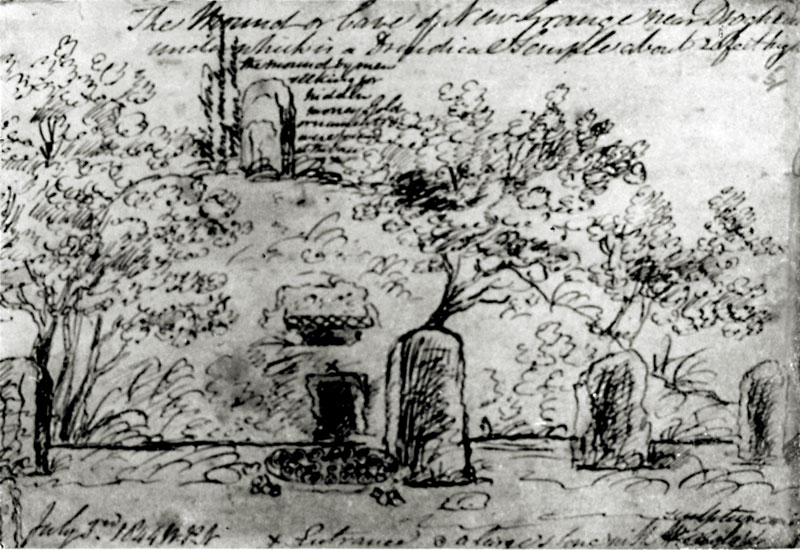
He has, in fact, as was his sole intention in what he did, effected a great improvement in the entrance, and has also brought to view some large stones, curiously carved after a very antique fashion, which are supposed to have formed a portion of the ornaments of the ancient doorway. After this rubbish had been removed, Mr. Maguire used some of the stones in making a road; but the gentlemen who went down to the locality are perfectly satisfied that his sole removing them was for the purpose of making the entrance more accessible, and that he has carried out his intentions without any injury to the monument.
There are within the same district, and not very distant from each other, several, we believe four monuments of the same character as that at Grange. The name “TempIe" has been applied to them—"pyramid” would probably convey a notion more nearly accurate. They present the appearance of great conical hills. On one of these the ancient castle of Dowth, belonging to the Neterville family was built, and its ruins still surmount the pyramid, antiquity piled on antiquity.
This Dowth monument has really been invaded for road making purposes, and possibly the rumor embodied in the article of our contemporary derived of its origin from what has been done to it than from what has been done to the monument of Grange. The entrance by which the interior of this Dowth monument was formerly reached had been long obstructed, and lost, so that the existence of any interior chambers within it was questioned, but the excavation made for the road-making materials has actually cut in upon the entrance, which is a circuitous gallery, winding round the pyramid, and in this respect differing from that of the pyramid of New Grange, which is straight and direct.
We are glad to be able to state that this desecration is for the time suspended—the person who occupies the lands on which the pyramid is situated having ceased to be a road contractor--but this, we regret to say, is all the security the nation that this monument will remain even as perfect as it is.
Thus utterly unprotected are the national monuments of Ireland, and thus forcibly is illustrated the barbarous policy of our English rulers in refusing us a few thousand pounds of our own money to complete the Ordnance Memoir. A department of that memoir would have been devoted to illustrating, describing, and recording--and would no doubt ultimately have led to protecting--the memorials of antiquity which are found upon our soil.
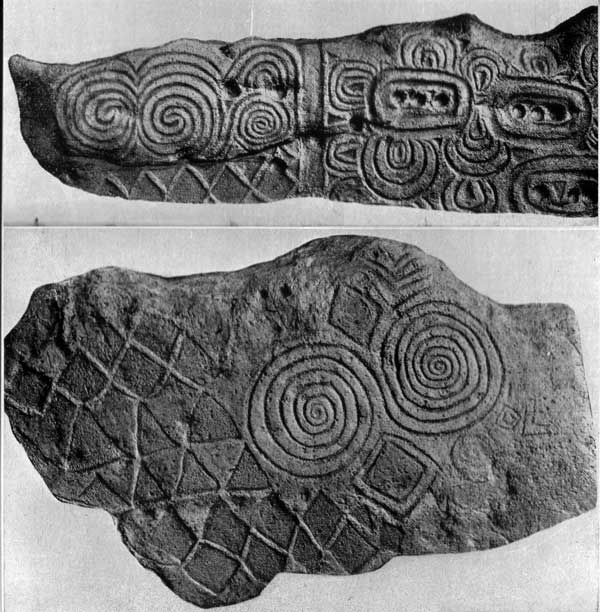
While we are on the subject we will allude to a circumstance which has given well-founded uneasiness to those who are anxious that these solid characters, in which so much of the history of ancient times is written, should not be effaced until a generation arises more interested about its native land, and more able than the present to preserve her records.
Some gentlemen, with the best intentions, but--without disparagement it may be said of them--not yet having sufficient antiquarian knowledge for the object they undertake, have from time to time opened some of the minor mounds or barrows which are found disposed--and, it is believed, in some mystical order--about these great ones. These gentlemen carefully collect all there they find within the mounds, and having collected, generally submit them to the inspection of the learned.These small barrows have evidently been used as places of sepulture; there are found in them human bones, and the bones of animals--also, ancient ornaments, and, we believe, weapons. The searchers into antiquity whom we have alluded to think they have done much for science when they have opened the barrows, collected the remain, and transacted these to some society in Dublin.

